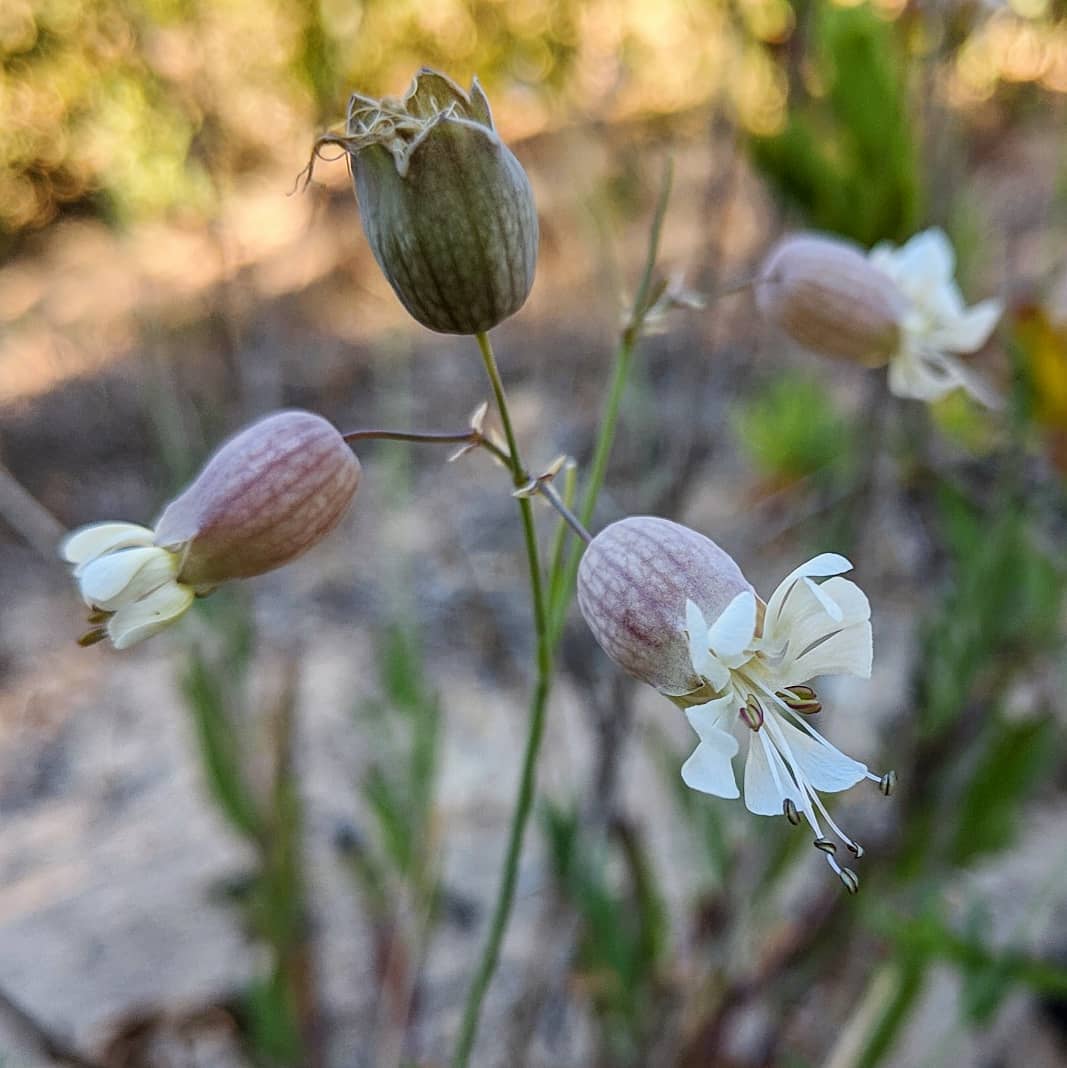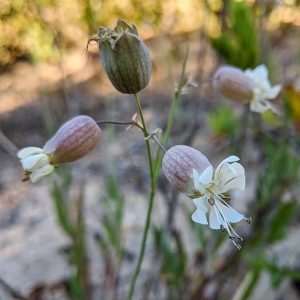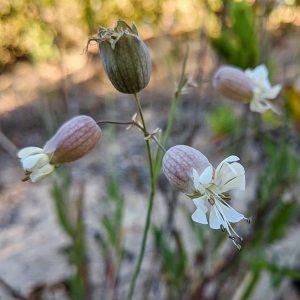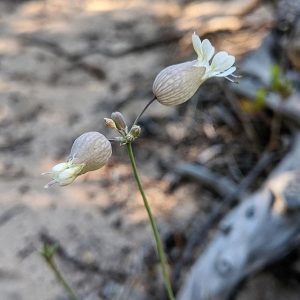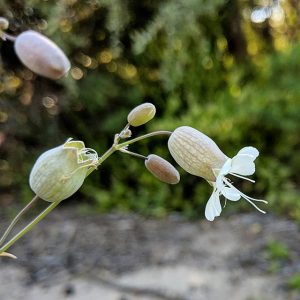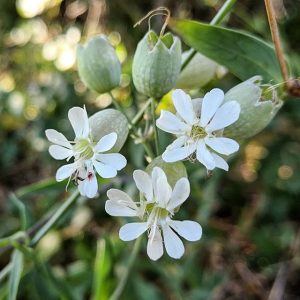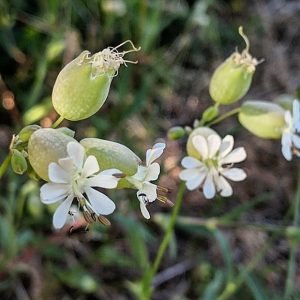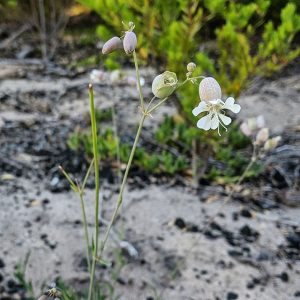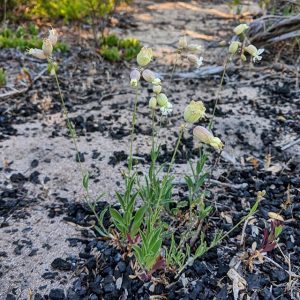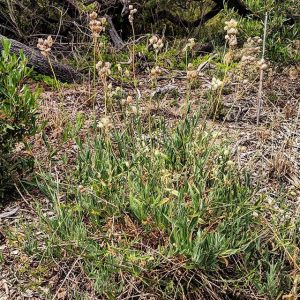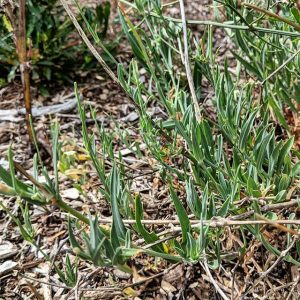Bladder Campion (Silene vulgaris), in alkaline coastal scrub along the back beach of the Mornington Peninsula. A European perennial flower and occasional harvested cooking green, it was possibly introduced intentionally to Australia although it does not appear in early Melbourne nursery catalogues. It has since been naturalised in a scattered fashion across southern Australia and Tasmania.
The plant seems to have been introduced at least twice to Victoria, with what are believed to be separate subspecies present in coastal areas and inland environments. The species was first recorded in Mansfield Shire in 1878 and at Benalla in 1886. The coastal introduction of a variety with narrower leaves (with which the photographed specimens appear to be consistent) may have been first recorded in Victoria in collections near Altona c. 1908-1912. Although the most recent record of the plant within the metropolitan dates to 1976 at Bayside, Bladder Campion has become firmly established on the Peninsula where it is a recurring feature of alkaline back dunes and residential margins.
Bladder Campion is a declared weed in South Australia, but more of a curiosity in Victoria where its environmental and economic impact has been more limited. An 1896 column in Melbourne’s Leader newspaper reports the opinion of von Mueller that it was ‘a harmless plant, of no particular utility, but may become an intrusive weed.’ However, while its presence in many parts of the state appears to have been fleeting, at Mornington it came to occupy groundcover niches in a vulnerable vegetation community, spaces which would otherwise be available to a variety of small indigenous shrubs, herbs and grasses.
View Original Post on Instagram
Search for information about Silene vulgaris in the Flora of Victoria
View information and occurrences of Silene vulgaris on the Atlas of Living Australia
